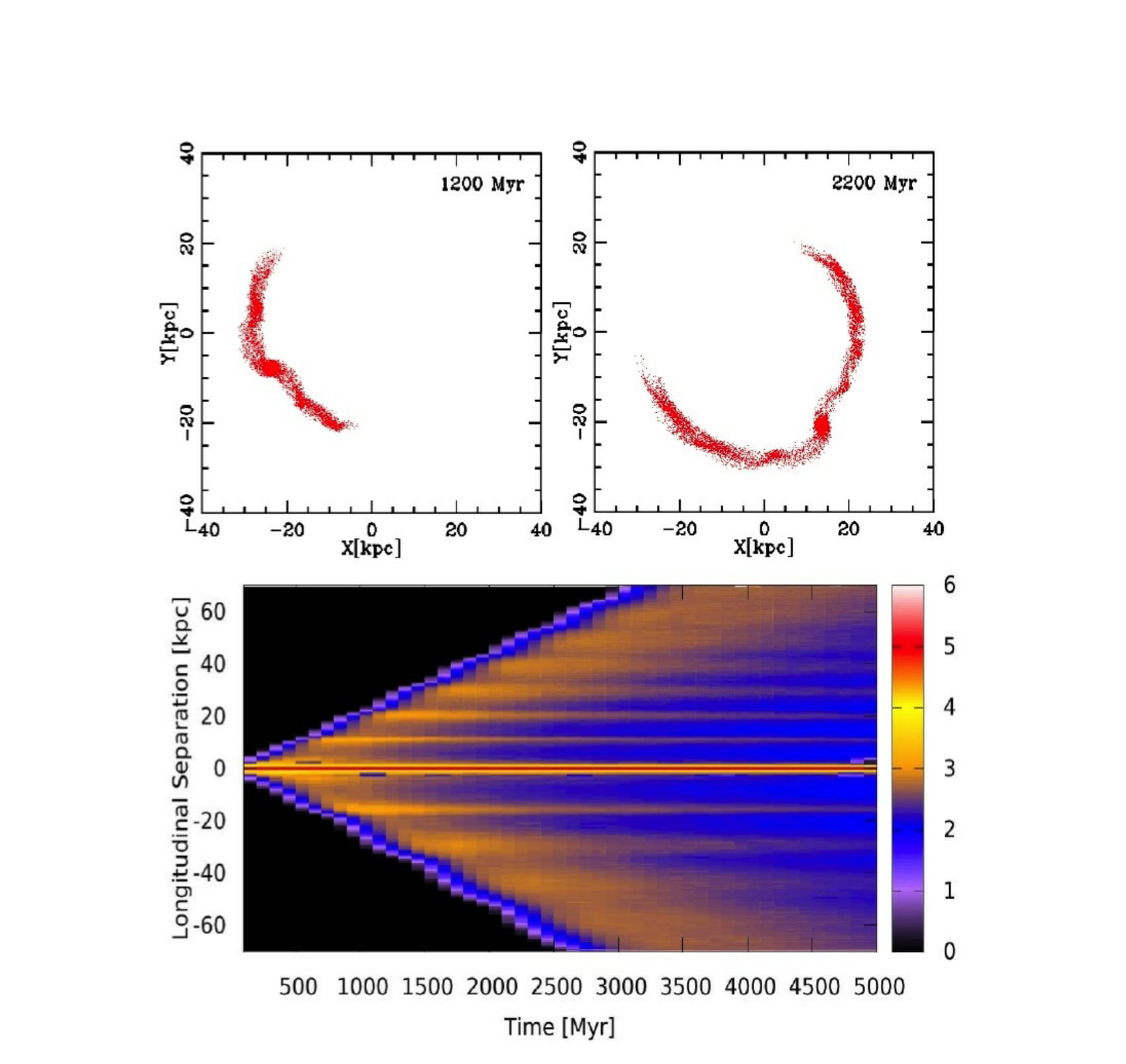Tidal tails as probes of the dark matter content of the Milky Way
The Milky Way is surrounded by a multitude of small objects (star clusters and dwarf galaxies) that orbit around the centre of our galaxy. The gravitational forces of our Galaxy not only keep them in their path, but they also slowly disturb the small entities. Lost stars do not fly away, but collimate into two arms (or tails) in front and behind the small object. These tails are faint and difficult to detect observationally, but with modern techniques it is now possible to reveal them.
The way lost stars move can be described by theoretical equations called epicyclic theory, a method used by the ancient Greeks and still very useful. In these equations, it is observed that the orbits of the stars in the tidal tails depend on the properties of their original object as well as on the distribution of the mass of the Milky Way. The measurement of the tidal tails can, therefore, help to understand the distribution of the mass, especially the unknown dark matter of the Milky Way as a whole.
One way to compare theoretical predictions with observations is through numerical simulations. This is why our researchers performed many simulations of tidal tails that emerge from dwarf galaxies in different orbits and in different mass distributions of the Milky Way with the idea of obtaining clear predictions for the observed tidal tails.
The number of stars in the tails is decreasing from near the object to the tips of the tails. But, at the same time, the theoretical equations predict special places within the tails where more stars should be found than on average, called over-densities.
"In our study we found a clear relationship between the distance to the first over-density and its size. We also see a puzzling asymmetry between the two tails, which is not supported by the theoretical explanation. These findings can now be used to explain the observed tails and, hopefully, will help us better understand the distribution of invisible dark matter in the Milky Way, "says researcher Dr. Michael Fellhauer.
The research, entitled "Formation and evolution of substructures in tidal tails", is currently published in Monthly Notices of the Royal Astronomical Society (Monthly Notices of the Royal Astronomical Society, MNRAS 2018, vol.476, page 1869 -1876) and was carried out by Bastian Reinoso, as principal investigator, together with researchers Michael Fellhauer and Rodrigo Véjar.
For more information, consult our website: http://theory-starformation-group.cl.
The full original article can be downloaded here.

Comunicaciones Departamento de Astronomía UdeC




